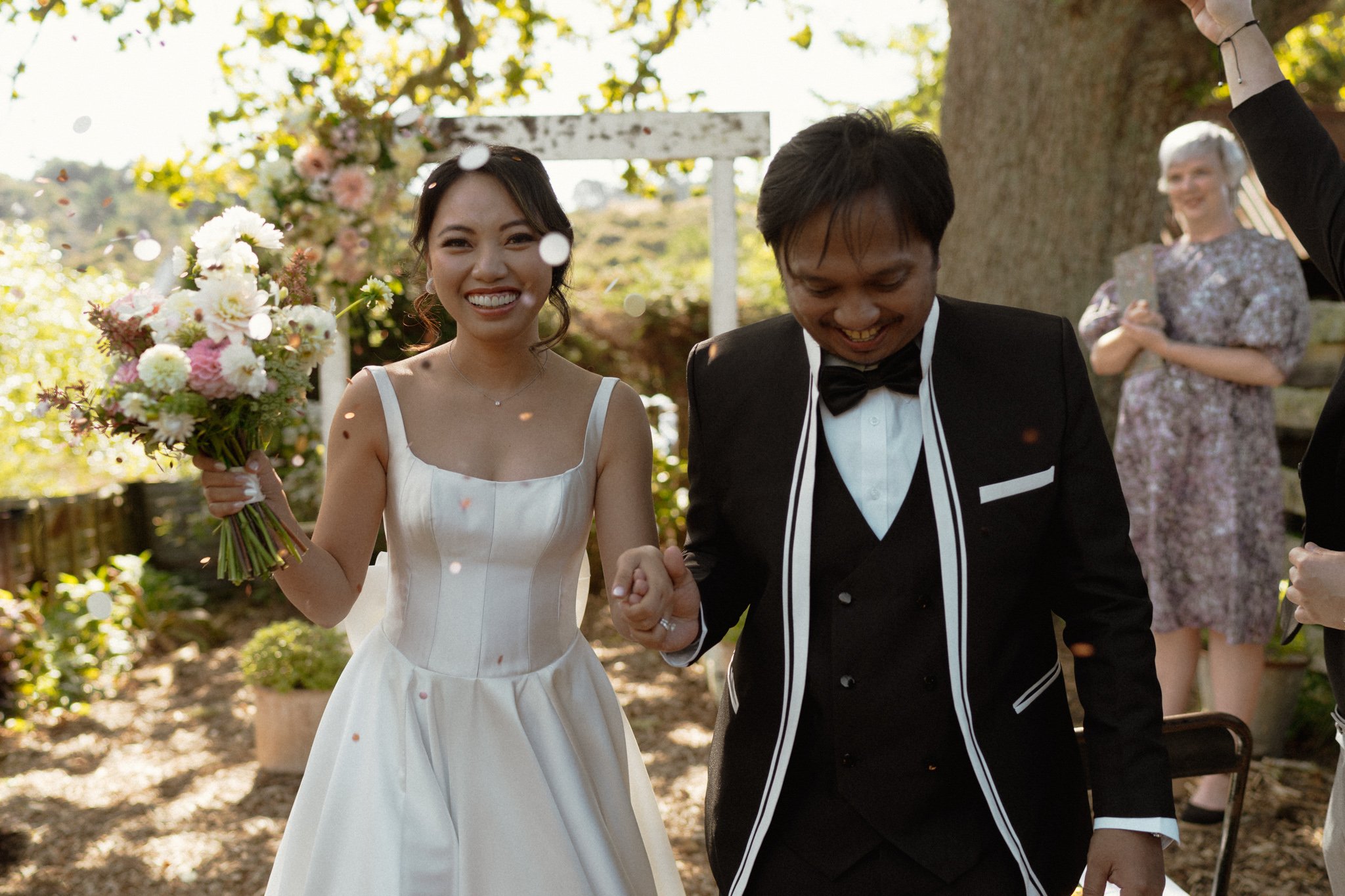Wedding Timeline Advice from a Former Bride
Photo by Jille Cristobal
As a wife who is also now a wedding photographer, I have had the privilege of going through wedding days from the perspective of both bride and wedding vendor. Safe to say I have some nuggets of information that might be of good use when planning out your timeline.
Outline how you want the day to run, before assigning times against them.
I don’t know about you, but I often just need to scribble something down to get the ball rolling. So start small, list down what you want to include, before worrying about what time or how long each item should take.
The key elements of a typical wedding day are:
Getting Ready
First look with parents of the bride + bridesmaids
First Look + Bride & Groom Portraits (optional)
Ceremony
Group Photos
Wedding Party Portraits + Cocktail Hour
Reception
Bride & Groom Sunset Portraits
Grand Exit
I say ‘typical’ very loosely — of course, it will depend on your needs and any cultural events you’d like to include. Feel free to shuffle around the order as well.
My wedding day was structured a little differently to this :)
Guide Questions, to flesh it out further
How many bridesmaids do you have, and how much time will they need for hair & makeup? (Your stylist will be able to answer this) Don’t forget to include your mum and future mum-in-law if they’d like to get their glam done too!
Do you want a first look?
Any key events for your family, culture, or religion that you’d like to include?
How important are sunset photos to you?
In peak New Zealand summer, sunset is at 8.30pm, so couples might duck out during the reception for sunset portraits. (Typically lasts for around half an hour, or it can be less, if you want to minimise time away from your guests.)
In a different time of year, you might be able to time this with post-ceremony portraits.
You can definitely still have gorgeous photos outside of the sunset hour — make sure to discuss this with your photographer.
Or if you still want sunset portraits but it doesn’t work with your timeline and you’d rather be with your guests, you can arrange to do bridal portraits on a different day. That way, you’ll be more relaxed and you can take your time.
What time do you want the formalities of your reception to finish? Then go backwards from there.
How many people are doing speeches? Don’t be afraid to give them a time limit.
You will always need more time than you think.
Make sure to build a decent buffer into each piece of the timeline. It’s better to run ahead and have moments to rest in between, than to run late.
Here are some examples:
If it took you 5 minutes to get into your dress, it will be more on the day, because you’ll have your hair and makeup all done up. Even putting your shoes on will be more of a mission (I had to ask one of my bridesmaids to put my shoes on for me, not because I’m a princess, but because I physically could not bend down lol)
If your venue is 10 minutes away, allow for 30 minutes, to factor in the time you get in and out of the car with your wedding dress (it’s a climb), plus room for any traffic you might encounter.
Allow an average of 3 minutes per group photo — and have your day-of coordinator get creative with herding the crowd to make it go quicker.
More importantly, you also want to build pockets of time for just you and your partner. To have some time to breathe and soak in the moment.
Some couples like to say their own personal vows to each other during the first look if they prefer to keep it private, and then do the standard vows during the ceremony (or a shorter version of the personal one).
If you are sneaking away for sunset photos during the reception, this is a good opportunity to take a minute and enjoy the view, too. (while your photographer does their thing in the background of course 😉)
If you’re a night owl, maybe a last dance after the reception?
Determine the hours of photography coverage.
In a typical wedding day, photographer arrives in the last hour or so of getting ready, and leaves sometime after the first dance (or grand exit, if you are doing one). This ensures we are there for the biggest moments and don’t miss anything. 8 or 10 hours of coverage should suffice in most situations.
I might be biased in saying this, but you don’t want to rush things or shortchange yourself on photography coverage on your most special day. You only get one chance. Be honest with yourself and how your guests are, and plan for it accordingly.
Overall, make sure it suits your needs.
This is your day — there’s no such thing as “this is how it’s always done” in the world of weddings. (Even though I’ve just spent the entire blog post giving you an idea.) At the end of the day, everything is optional if you want it to be — except of course the legal side of things.
If you need someone to chat to in more detail, I’d love to be in your corner. Hit the button below to contact me.
All photos by Jille Cristobal



